Colette Delozanne
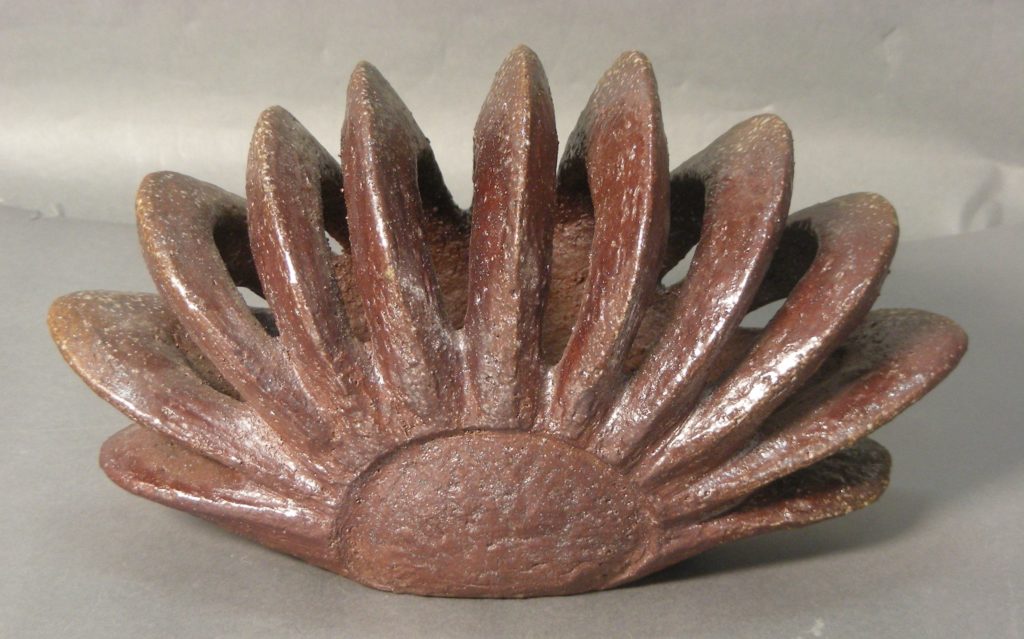
(b. 1931, Borget, France) lives and works in Caracas, Venezuela
Inti, 1973
stoneware, 6.5 x 10 x 4.25 inches, 93.39.59
Born in France, Colette Delozanne began studying languages and art history at the National Center for Tourism Education in Paris in 1950. Afterwards, while living in England and Spain, she fell in love with a Venezuelan medical student, and moved with him to Caracas in 1955. She worked for a number of years as a language teacher, translator, and secretary, but quit when she became tired of how she was treated in the workforce. Her husband, Eloy Silvio Pomenta, told her that she did not need to work anymore and encouraged her to dedicate herself to whatever she wanted. Moved by this opportunity, she began training as a ceramicist with El Taller Libre de Artes (Free Art Workshop), and later in the workshops of Gustavo Lafée and Sinai Ovalles.
Delozanne’s sculptural ceramic work draws inspiration from the natural world, specifically the tropical environment or Venezuela. She references plants, corals, and other natural structures to create organic forms that have holes, rhythmic patterns, and soft curves. Mimicking the effects of erosion in the texture of the work, Delozanne draws attention to the passage of time and the spiritual qualities of nature.
In the spring of 1971, under the auspices of the International Academy of Ceramics, the Tennessee Arts Commission pledged its support for the promotion and establishment of the U.S. International Ceramic Symposiums. The Symposium’s mission to help develop a worldwide network of support for ceramic art was achieved by bringing together top ceramic artists from around the world for a month-long sharing of ideas and creation of innovative ceramics.
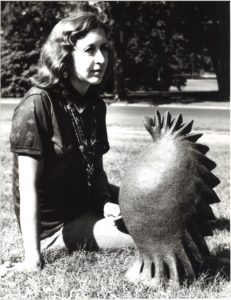
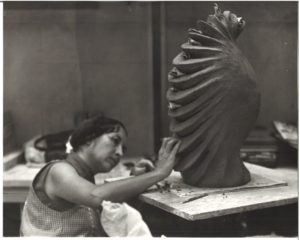
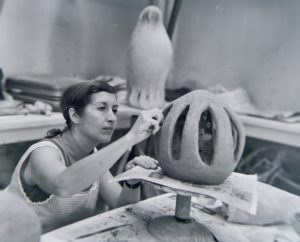
Left: Delozanne with stoneware piece. Center: “Delozanne (Venezuela) cuts openings between the curved ribs of a sculptural form. Newspaper is used for support.” (Ceramics Monthly) Right: Delozanne sculpting More images below
Delozanne represented Venezuela at the First U.S. International Ceramic Symposium, which consisted of twenty-five artists from thirteen different countries, and was hosted in the summer of 1973 at the Memphis Academy of Art. While at the Symposium, she used slabs to construct abstract organic structures, some of which feature openings that allow a peek inside.
Since the Symposium, Delozanne has continued her artistic practice. She has won a number of awards, including first prize at the National Hall of Arts of Fire in 1971 and the Venezuelan National Sculpture Prize in 1977. In the 1980s she made increasingly large sculptures out of bronze, cement, and fiberglass, that maintained the architectural yet organic spirit of her smaller ceramic work. She has exhibited her work widely throughout Caracas, and has even made a number of public works for the city, which can be found in parks and subway stations. Her work is in a number of international collections, including the National Art Gallery of Venezuela, the Institute of Contemporary Art in Lima, Peru; the Museum of Contemporary Art in Caracas and the Ciudad Bolívar Museum in Venezuela, and the Sculpture Museum of Latin America in Seoul, South Korea. In 2004, a retrospective book, Colette Delozanne: Escultora, was published. Currently, Delozanne has returned her focus to creating and exhibiting smaller pieces, and is concerned with ensuring that her works and legacy will live on and continue to serve younger generations after she is gone.
Colette has traveled extensively in South America and has a real interest in the natural techniques of some of the Indian artists there. She feels communication and unity are the keys to the growth and enrichment of the arts. Her own work is sculptural in form, white clay with glazes which she mixes. – 1973 International Ceramic Symposium Catalogue
Written by Aiden Layer, TN Arts Intern
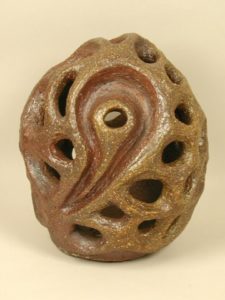
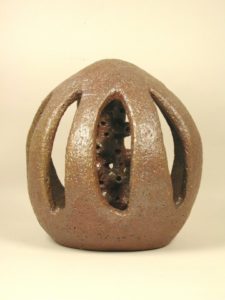
Left: Piache, 1973, stoneware, 7.5 x 6.25 x 19 inches, 93.39.153 Right: Temple for Watuna, 1973, stoneware, 10 x 10 x 27 inches, 93.39.191

